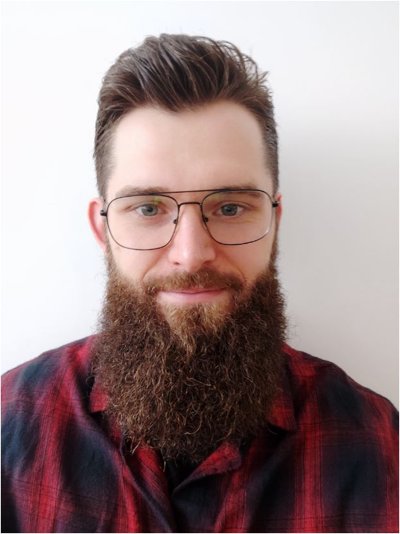Topology optimization with additive manufacturing constraints
Due to the COVID-19 crisis measures the PhD defence of Grzegorz Misiun will take place online (until further notice).
The PhD defence can be followed by a live stream.
Grzegorz Misiun is a PhD student in the research group Nonlinear Solid Mechanics (NSM). His supervisors are prof.dr.ir. A.H. van den Boogaard and dr.ir. H.J.M. Geijselaers from the Faculty of Engineering Technology (ET).
 Additive manufacturing (AM) is a new production technology that in recent years has gained much attention both from the scientific world and from industry. It is a method of building three-dimensional objects by depositing layer upon layer of material in an incremental manner. Its biggest advantage, when compared with other conventional production methods, is virtually unlimited freedom of design and the fact that AM is often suitable for metals that are hard to produce by other means.
Additive manufacturing (AM) is a new production technology that in recent years has gained much attention both from the scientific world and from industry. It is a method of building three-dimensional objects by depositing layer upon layer of material in an incremental manner. Its biggest advantage, when compared with other conventional production methods, is virtually unlimited freedom of design and the fact that AM is often suitable for metals that are hard to produce by other means.
Various metal AM technologies can be used, depending on the form of an input material and the energy source. This work focuses on the powder bed system, selective laser melting (SLM). In SLM a part is built from thin powder layers that are selectively melted by means of a laser. The SLM process creates parts in a range of centimetres for which several thousands of layers are needed and the printing process may take up to several dozens of hours.
A problem related to metal AM is frequently occurring production failures due to shape distortions that happen during the production. This is caused by thermal shrinkage of the consecutive material layers, an inherent property of AM. It leads to accumulation of residual stresses and, in consequence, distortions. Since in the event of failure the costly process has to be repeated, it is beneficial to support the design stage with numerical models and to predict possible distortions in advance.
The problem connected with numerical modelling of SLM is that the length-scales are small, the layer thickness and laser spot are in the range of a few dozen micrometres and it takes a long time to produce a single part. It is therefore impossible to perform simulation of SLM on a part scale with commonly known numerical techniques, for example from welding simulations. Therefore, the first goal of this doctoral research is to develop a model that predicts distortions within a reasonable time.
In this thesis the proposed numerical model combines some existing techniques and supplements them with new approaches. It accounts for all steps of the simulations process, starting from mesh creation, and it includes all production stages: printing, heat treatment and release. Moreover, a special element definition is proposed to model support structures.
The second topic investigated in this research regards topology optimization (TO). TO is a structural optimization method that searches for the optimal material distribution for a given part application with some assumed restrictions. It often results in organic geometries that are hard to produce with conventional methods. Therefore, additive manufacturing and topology optimization seem like a perfect match. The only problem that still remains is the distortions, which can be especially severe for the complex geometries. Hence, the idea is to incorporate numerical modelling of additive manufacturing into a TO loop and to set constraints on distortions.
In this thesis a method is presented to couple additive manufacturing simulations with topology optimization. Two possible causes of failure of powder bed additive manufacturing are accounted for: recoater collision and global distortion of the product. Both are calculated by simulation of the build process and their limits are applied as constraints to a topological optimization based `Solid Isotropic Material with Penalization' method. An adjoint method is used to derive the sensitivities of the additive manufacturing constraints. Two optimization approaches are investigated. In the first the optimizer alternates a part shape in such a way that distortions are compensated. The second approach assumes unalterable shape of a part and it tries to limit the distortions solely by proper placement of auxiliary structures, supports. The methods are applied to the optimization of brackets, both in 2D and 3D and, additionally, supports distribution is optimized for a use case geometry.
In every case the optimization found a solution that maximizes the part performance and preserves constraints. In the case of part shape optimization the obtained designs show features that are aimed at facilitating the printing process rather than improving the load carrying function. These features resemble supports. Optimization of supports results in distributions that are not easy to interpret. It indicates that it may be hard to effectively choose supports location based only on intuition and experience. Moreover, it has been proven that it is possible to partially reduce distortion of a part by tailoring the supports distribution.

